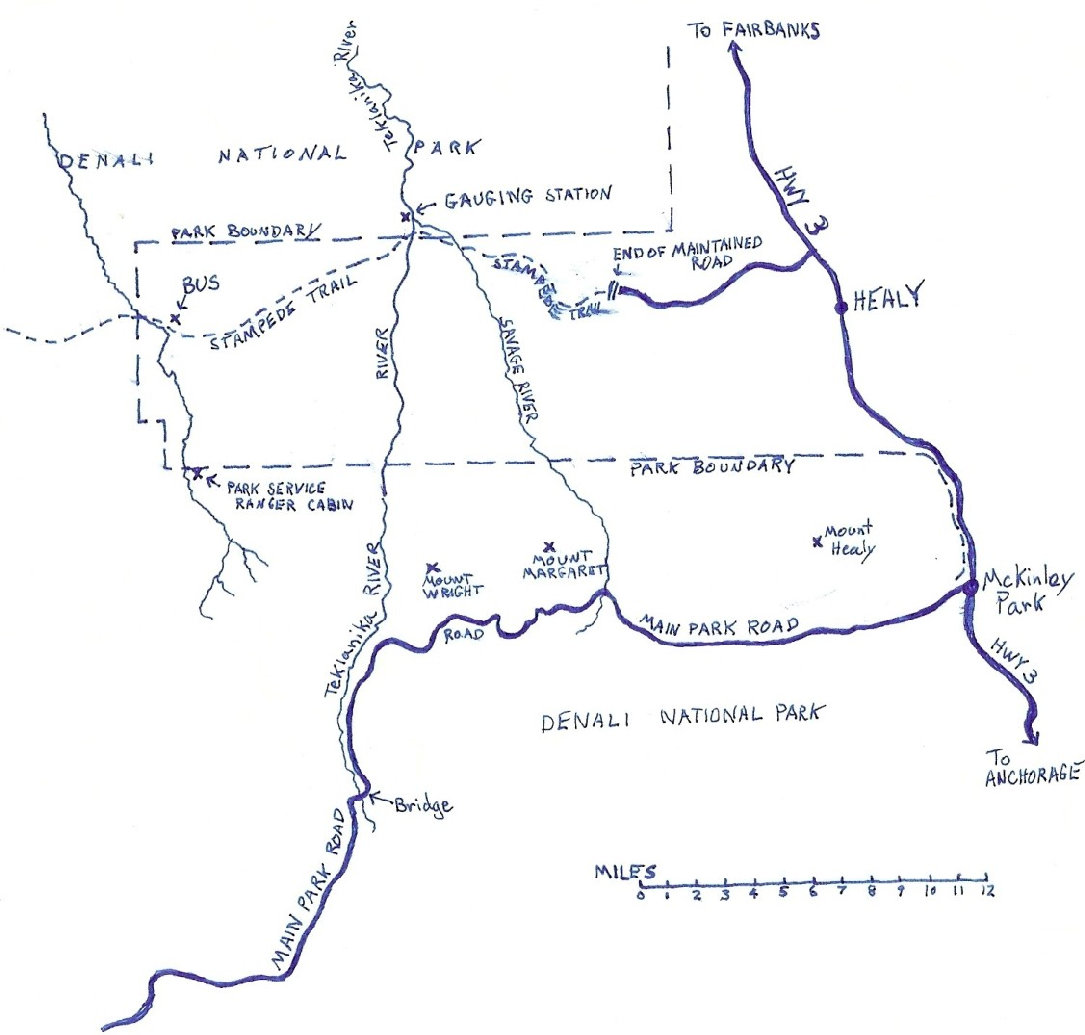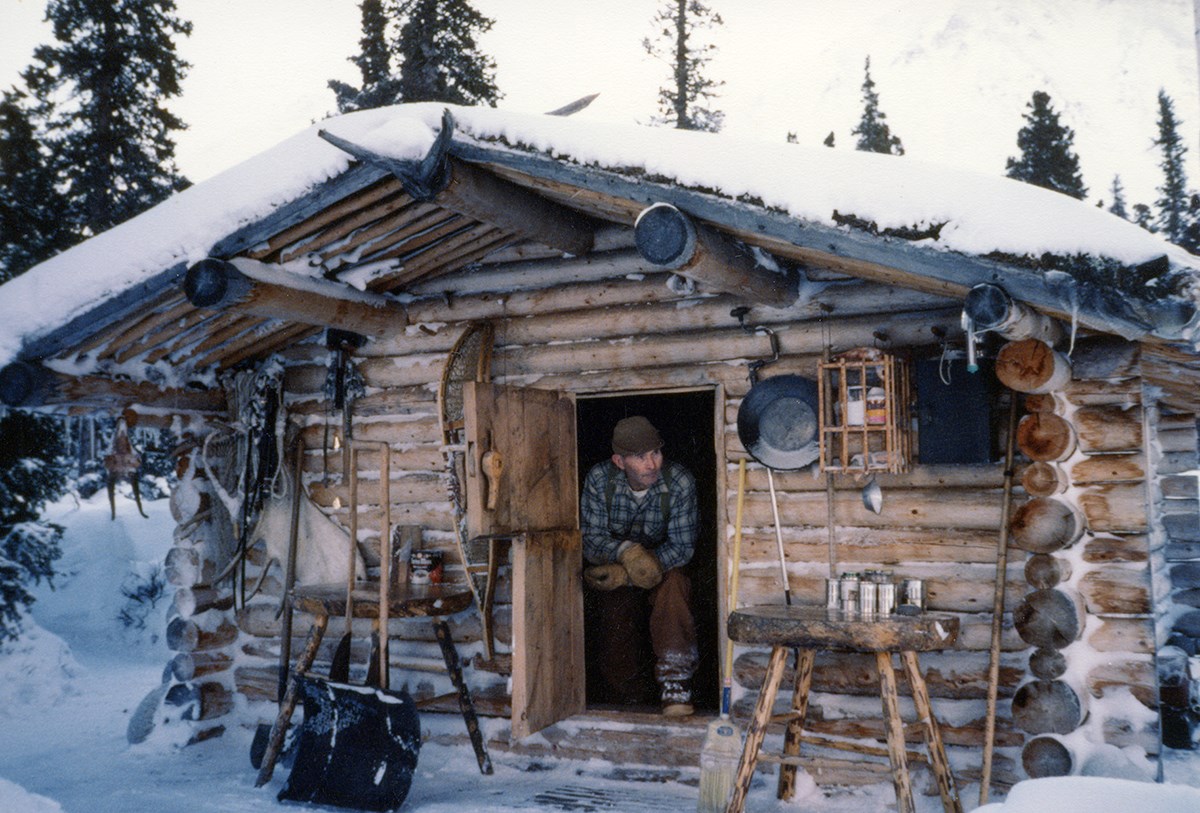Originally posted by 5.0_CJ
View Post
My intent here is not to criticize the young man who died, although it certainly would be easy. If somebody has a dream to go live off the land that is their choice, their life. I would never criticize someone for living their dreams. It was just one choice he had made that I wish could have been different. No one adventure is so great that you should miss a lifetime of more adventures. This was the case for Chris McCandless.
In the book, Into The Wild, Krakauer says that "McCandless yearned to wander in uncharted country, to find a blank spot on the map". But there are no blank spots on the map so "with his idiosyncratic logic, he came up with an elegant solution to this dilemma: He simply got rid of the map." Chris hiked around 15 miles up an old road called the Stampede Trail. He found an old abandoned bus and called it home.
After a few months in the area surviving off hunting and forging, he had finished his dream of the Alaska experience. When it was time to go back to civilization, he reached the Teklanika River he crossed a few months before but found a raging torrent with the late spring snowmelt. Chris thought it was impossible to cross back over the river (which it was at that particular spot). So he went back to the old bus he had been living in. He was healthy at this point and had already explored much of the valley and even a few mountain tops in the area. He would have to wait to get over the river....yet, he was already done with this experience. He weighed his options as few, he thought he had no options. This couldn't be further from the truth.
Although he spent months in the location without seeing another person, it is hardly a major wilderness when compared to most of Alaska. Not far were roads and resources. Just to the east is the George Parks Highway, the main road between Anchorage and Fairbanks. Alaska has few highways but this is one of them. Not far upstream to the south were the crowds of Denali National Park and the park shuttle system full of tourists, every day. The road crosses the same river on a big bridge but well out of his view, a day or two walk away. He had to want to get on with the next big adventure but just didn't know that route option was there. Since he came prepared to hike a few hundred miles, the distance to the bridge is quite insignificant.
Even worse, if he had a topographical map, it would have showed the USGS gauging station just one half mile down stream. At that location is a one inch thick cable spanning across the river. It even turns out the passenger basket was anchored to his side which would have been a fun way to cross for him.
Basically, if he had a map he would have quickly realized he had two very good options instead of going back to the place he didn't really want to go. It was because he went back that after several more weeks, the hunting dried up and he relied on eating more plants and nuts. Unfortunately, he misidentified some and slowly poisoned himself to death. The map is an essential piece of gear. I have been on thousands of trips. I can honestly say I've needed matches and my pocket knife on maybe one trip. You don't even have to have a compass most of the time. It is the map and knowing where you are at all times on a map is the key to avoiding problems in the wilderness. I can trace back the majority of search and rescues to no map or not knowing how to read a map. I've used the example of Chris McCandless during many lectures. His story is heartbreaking because his life was cut short at a very young age. I have no doubt, if he had a map he would have lived to experience his next great adventure.
In the book, Into The Wild, Krakauer says that "McCandless yearned to wander in uncharted country, to find a blank spot on the map". But there are no blank spots on the map so "with his idiosyncratic logic, he came up with an elegant solution to this dilemma: He simply got rid of the map." Chris hiked around 15 miles up an old road called the Stampede Trail. He found an old abandoned bus and called it home.
After a few months in the area surviving off hunting and forging, he had finished his dream of the Alaska experience. When it was time to go back to civilization, he reached the Teklanika River he crossed a few months before but found a raging torrent with the late spring snowmelt. Chris thought it was impossible to cross back over the river (which it was at that particular spot). So he went back to the old bus he had been living in. He was healthy at this point and had already explored much of the valley and even a few mountain tops in the area. He would have to wait to get over the river....yet, he was already done with this experience. He weighed his options as few, he thought he had no options. This couldn't be further from the truth.
Although he spent months in the location without seeing another person, it is hardly a major wilderness when compared to most of Alaska. Not far were roads and resources. Just to the east is the George Parks Highway, the main road between Anchorage and Fairbanks. Alaska has few highways but this is one of them. Not far upstream to the south were the crowds of Denali National Park and the park shuttle system full of tourists, every day. The road crosses the same river on a big bridge but well out of his view, a day or two walk away. He had to want to get on with the next big adventure but just didn't know that route option was there. Since he came prepared to hike a few hundred miles, the distance to the bridge is quite insignificant.
Even worse, if he had a topographical map, it would have showed the USGS gauging station just one half mile down stream. At that location is a one inch thick cable spanning across the river. It even turns out the passenger basket was anchored to his side which would have been a fun way to cross for him.
Basically, if he had a map he would have quickly realized he had two very good options instead of going back to the place he didn't really want to go. It was because he went back that after several more weeks, the hunting dried up and he relied on eating more plants and nuts. Unfortunately, he misidentified some and slowly poisoned himself to death. The map is an essential piece of gear. I have been on thousands of trips. I can honestly say I've needed matches and my pocket knife on maybe one trip. You don't even have to have a compass most of the time. It is the map and knowing where you are at all times on a map is the key to avoiding problems in the wilderness. I can trace back the majority of search and rescues to no map or not knowing how to read a map. I've used the example of Chris McCandless during many lectures. His story is heartbreaking because his life was cut short at a very young age. I have no doubt, if he had a map he would have lived to experience his next great adventure.




Comment